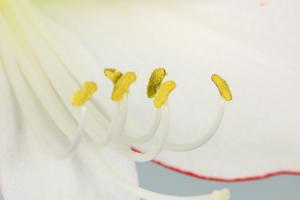What Type of Diffusion Does Water Enter a Plant Cell?
Water is an essential component of plant cells, and the movement of water is critical to ensure the plant's survival. But how does water enter a plant cell? The process through which water enters a plant cell involves diffusion, which is the movement of molecules from an area of high concentration to an area of low concentration. In plant cells, there are two types of diffusion that allow water to move into the cell: passive transport and facilitated diffusion.
Passive Transport:
Passive transport is the movement of molecules across a cellular membrane without the use of energy. In plant cells, water molecules can move freely across the membrane through a process called osmosis. Osmosis is a type of passive transport that occurs when water molecules move from an area of high concentration to an area of low concentration through a semi-permeable membrane. The semi-permeable membrane in plant cells is the cell wall and the membrane surrounding the cell's vacuole. The cell wall and the membrane surrounding the vacuole are permeable to water, meaning water molecules can pass freely through the cell walls and enter the vacuole.
The movement of water through osmosis is critical to maintaining the proper water balance in plant cells. If a plant cell does not have the right amount of water, it can become plasmolyzed or dehydrated, which can lead to the plant's death. Osmosis is also responsible for the turgor pressure, which is the pressure that develops within the plant cell against the cell wall. Turgor pressure provides support to the plant cells and helps to maintain the shape of the plant.
Facilitated Diffusion:
Facilitated diffusion is another type of passive transport that allows molecules to move across the cellular membrane with the help of a transport protein. In plant cells, water molecules can be transported through the membrane by a family of proteins called aquaporins. Aquaporins are specialized transport proteins that allow water molecules to move quickly and efficiently across the membrane, overcoming the hydrophobic barrier of the membrane. Aquaporins can increase the speed at which water moves into the plant cells, which is crucial for the plant's survival, especially during times of drought or other environmental stresses.
In conclusion, water moves into a plant cell through two types of diffusion: passive transport and facilitated diffusion. Passive transport occurs through osmosis, where water molecules move from an area of high concentration to an area of low concentration through a semi-permeable membrane. Facilitated diffusion occurs through the help of aquaporins, specialized transport proteins that allow water molecules to move across the hydrophobic barrier of the membrane. Both types of diffusion are critical for the movement of water into the plant cell and the maintenance of the plant's water balance, turgor pressure, and overall survival.

 how many times do yo...
how many times do yo... how many planted tre...
how many planted tre... how many pine trees ...
how many pine trees ... how many pecan trees...
how many pecan trees... how many plants comp...
how many plants comp... how many plants can ...
how many plants can ... how many plants and ...
how many plants and ... how many pepper plan...
how many pepper plan...































